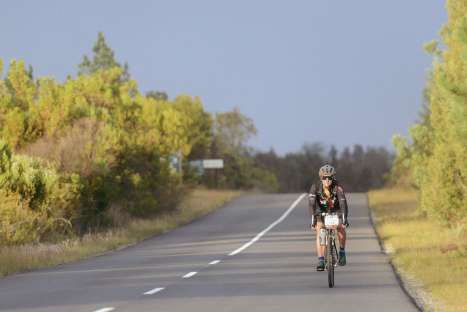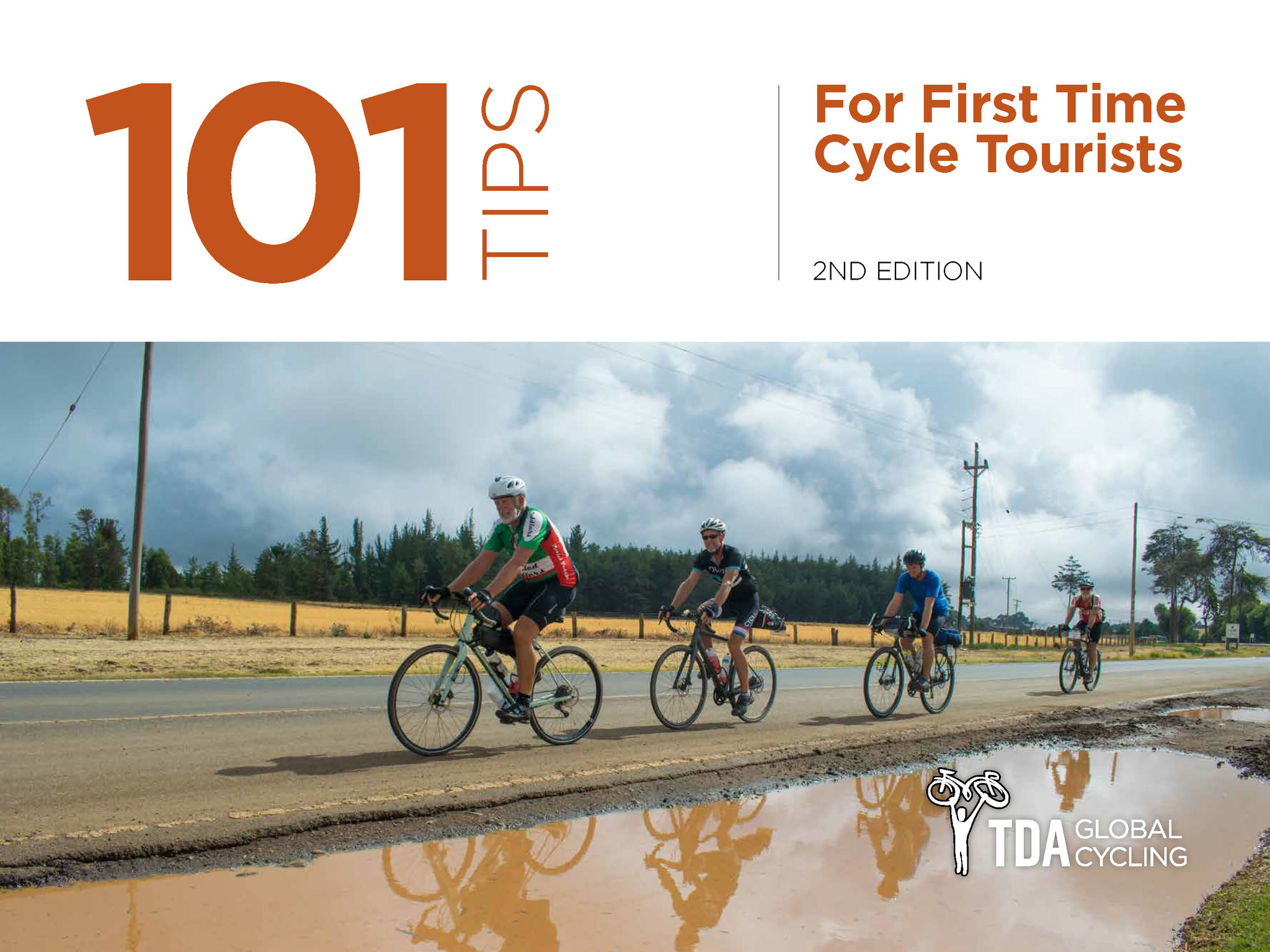Blog
Oceans Away
Tate Drucker is the Content Creator on the 2022 Tour d’Afrique. Her fourth post comes to us from the Atlantic Coast of South Africa. Be sure to follow their progress on Instagram.
There it is on the horizon: a thin veil of blue. After cycling through Namibia for two weeks, the riders on the Tour d’Afrique have traded oceans of sand and gravel for the immense blue waters of the Atlantic Ocean. The arrival at the coast, however, didn’t come without the riders first being challenged. Long days on the Northern Cape’s busy roads, relentless climbs, and occasional clouds of desert flies and locusts greeted the riders, day in and day out, but the promise of peddling towards the Atlantic pushed them on. After careening over the hill where the ocean came into view for the first time, many of the riders remarked on how cathartic it was to see the ocean.

As the riders arrived one by one into Strandfontein — the first beach campsite of the trip — they were greeted by all the normal sights of a TDA camp: the Tour d’Afrique truck with its sprawling canopy outstretched, early- arriving riders washing their bikes or setting up their tents, staff chopping mushrooms and dicing onions for dinner. But this time, the backdrop of what has become so familiar to them was what made this day different: brilliantly blue crashing waves, wild ocean swell, dolphins surfing the breakers as they chased schools of fish, and misty cliffside bluffs. Laughter seemed to ring through camp more than usual, and riders jumped into the sea — some still in their lycra and cycling gloves. It was as if everyone on the trip collectively exhaled, as if something celebratory was taking place. As if this was any different from any other day.
 Studies have shown that there may actually be a scientific reason behind why our moods change so dramatically when we reach the sea. Negative ions — a small molecule naturally occurring in nature — are found in extremely high quantities near the ocean. These ions pass through our bodies mostly through the air we breathe; so the more you inhale and exhale while next to the ocean, the more ions enter your lungs and bloodstream. Negative ions are created by atoms breaking apart, which happens through natural occurrences that involve some kind of turbulence; such as in rainstorms or in strong gusts of wind. However, studies have found that at the ocean in particular, there is an average of 2000 negative ions per cubic centimetre. This is as opposed to a crowded city, which has an average of less than 100. In fact, a recent study published in the Journal of Alternative Complementary Medicine suggests that negative ion therapy could be used to treat symptoms of depression and anxiety.
Studies have shown that there may actually be a scientific reason behind why our moods change so dramatically when we reach the sea. Negative ions — a small molecule naturally occurring in nature — are found in extremely high quantities near the ocean. These ions pass through our bodies mostly through the air we breathe; so the more you inhale and exhale while next to the ocean, the more ions enter your lungs and bloodstream. Negative ions are created by atoms breaking apart, which happens through natural occurrences that involve some kind of turbulence; such as in rainstorms or in strong gusts of wind. However, studies have found that at the ocean in particular, there is an average of 2000 negative ions per cubic centimetre. This is as opposed to a crowded city, which has an average of less than 100. In fact, a recent study published in the Journal of Alternative Complementary Medicine suggests that negative ion therapy could be used to treat symptoms of depression and anxiety.
The benefits of being by the ocean may be undeniable. But what does this mean exactly, and how does it benefit riders as they cycle past beach towns and along oceanside roads? Negative ions directly impact the serotonin levels in our brains, creating an overall feeling of wellbeing and calmness. For some riders, the shift was so significant that many of them often remarked how they were feeling more positive and excited for the day than usual. There were still long days, still headwinds, still stretches of relentless corrugation. The only thing that had changed was the stretch of blue and the white noise of waves constantly in the background. Turns out that cycling on the winding roads that hug South Africa’s coastline may just be healthier and better for us than we realize.
RELATED
TOUR
 REGISTER NOW
REGISTER NOW




Leave a Comment for "Oceans Away"